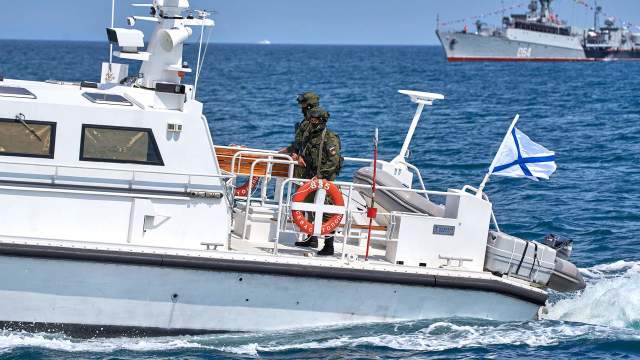The equipment of the drones raised to the surface showed that they were moving in the zone for the export of agricultural productsThe naval drones involved in the Sevastopol attack took off from the Black Sea coast from near Odessa and moved along the "grain corridor".
Moreover, one of them was launched directly in the security zone. This was shown by data from the memory blocks of drones raised to the surface, the Ministry of Defense of the Russian Federation said on October 30. After the attack, the Russian side suspended its participation in the grain deal. Experts note that the fleet repulsed a complex combined attack, which will not be repeated soon — due to retaliatory strikes by Russian forces.
Attack on Sevastopol
On Saturday, October 29, at 04:20, the Kiev regime staged an attack on the ships of the Black Sea Fleet and civilian vessels that were on the external and internal raids of Sevastopol. It involved nine unmanned aerial vehicles and seven autonomous marine drones. All air targets were destroyed by the forces of the ships of the Black Sea Fleet, the Russian Defense Ministry reported.
— During the repulse of a terrorist attack on the outer roadstead of Sevastopol, four naval unmanned vehicles were destroyed using naval weapons and naval aviation of the Black Sea Fleet, three more vehicles were destroyed on the inner roadstead. Minor damage was sustained by the naval minesweeper Ivan Golubets, as well as a boom in Yuzhnaya Bay," said the official representative of the Ministry of Defense of the Russian Federation, Lieutenant General Igor Konashenkov.
The first unknown marine apparatus moving into the harbor of Sevastopol Bay was discovered by the radiotelegraph operator of the combat communications unit of the patrol ship "Ladny", sailor Artem Zhiltsov. That night he performed the duties of a watch signalman at the anti-aircraft surveillance post.
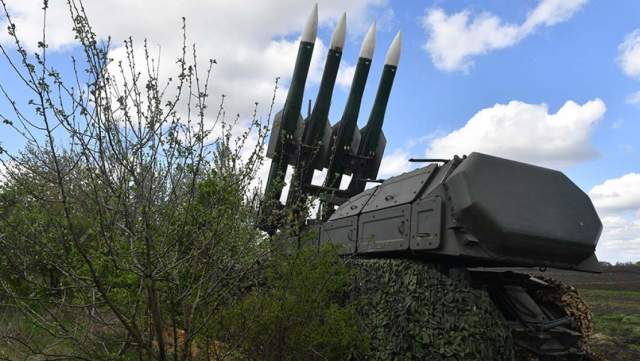
Buk-MZ anti-aircraft missile system of the Russian Armed Forces
Image source: Photo: RIA Novosti
The sailor immediately informed the officer of the watch about the drone, which allowed the fire from the ship's weapons to destroy the device. For conscientious performance of official duties, Artem Zhiltsov is presented by the command to the state award.
The military department reported that the ships of the Black Sea Fleet that were attacked were involved in ensuring the security of the "grain corridor" as part of an international initiative to export agricultural products from Ukrainian ports.
The preparation of a terrorist act and the training of servicemen of the Ukrainian 73rd special Center for naval operations were carried out under the leadership of British specialists located in the city of Ochakovo, the Ministry of Defense emphasized.
In addition, according to information available to the Russian military department, representatives of this unit of the British Navy took part in planning, ensuring and implementing a terrorist attack in the Baltic Sea on September 26 this year to undermine the Nord Stream –1 and Nord Stream–2 gas pipelines.
On the same day, the Ministry of Defense of the Russian Federation made a statement that, taking into account the terrorist act carried out by the Kiev regime with the participation of UK specialists against ships of the Black Sea Fleet and civilian vessels involved in ensuring the security of the grain corridor, the Russian side suspends participation in the implementation of agreements on the export of agricultural products from Ukrainian ports.
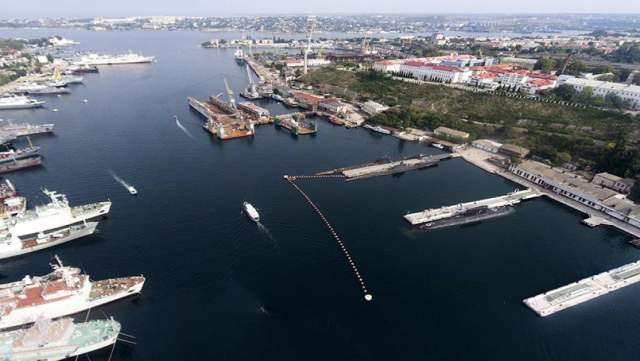
View of Sevastopol Bay
Image source: Photo: Global Look Press/Nikolai Gyngazov
An attack on Sevastopol was expected, but no one could say what it would look like, the captain of the first rank in the reserve Vasily Dandykin told Izvestia.
— The very first bell rang on the Day of the Navy, when an aerial drone attacked the headquarters of the Black Sea Fleet, — he recalled. — A little later, several semi—submersible drones were stopped near Sevastopol - a photo of one of them was shown on the seashore. The conclusions of our Navy and the city authorities were made, but the enemy's attack was thought out to the smallest detail. The British special services and special operations forces are able to do this, and their handwriting is felt. It is very difficult to detect small-sized semi-submersible marine drones. They barely rise above the water, and here they also walked along the "grain corridor" under the cover of peaceful vessels at night. In addition, the strike was combined — both from the sea and from the air. It wasn't easy to beat him off, but we managed.
The retaliatory actions of the Russian armed forces have already followed, the expert noted.
—A drone strike was carried out on the 73rd Naval Special Operations Center of Ukraine in Ochakov," he recalled. — It is possible that not only Ukrainian forces got there, but also British military specialists who have long chosen this city. I am sure that our command will not be limited to this and the enemy will have to wait for new strikes and prepare another attack it will be much harder for them.
Through the corridor
After repelling the attack, the wreckage of marine drones was brought to the surface. Specialists of the Russian Ministry of Defense, together with representatives of other government departments, conducted an examination of Canadian-made navigation modules installed on drones.
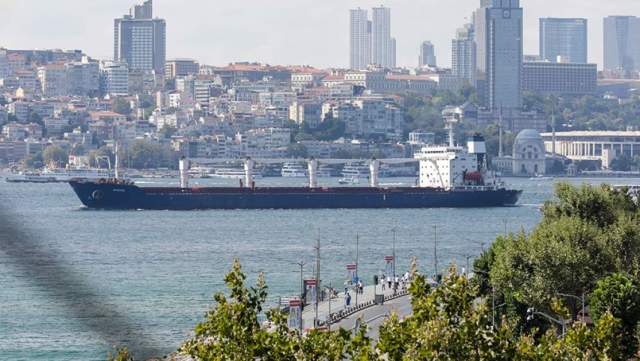
Razoni cargo ship with Ukrainian grain on the Istanbul roadstead
Image Source: Photo: TASS/Zuma
The information read from the memory of the navigation receiver showed that the launch of marine unmanned vehicles was carried out from the coast near the city of Odessa, the military department said. The marine drones moved through the security zone of the "grain corridor", after which they changed their route and headed to Sevastopol. The coordinates of the movement of one of the marine UAVs indicate the starting point in the maritime security zone of the "grain corridor" in the Black Sea.
According to experts, this may indicate the launch of this device from aboard one of the civilian vessels chartered by Kiev or its Western patrons for the export of agricultural products from the ports of Ukraine.
In the air — enough
On October 29 and 30, the Russian armed forces continued to repel attacks by Ukrainian armed formations.
— In the Kupyansk direction, the enemy, with up to two battalion tactical groups reinforced by foreign mercenaries, launched seven unsuccessful attacks on the positions of Russian troops in the areas of Pershotravnevoye, Orlyanka, Tabayevka and Berestove settlements of the Kharkiv region, — said Igor Konashenkov.
The units of the VFU were thrown back to their original lines. Up to 250 servicemen and militants, one tank, six infantry fighting vehicles, four armored personnel carriers and eight vehicles were destroyed, the military department said.
A day earlier, in this direction, Russian troops defeated two reinforced companies of the VFU and a unit of foreign mercenaries. More than 70 servicemen and militants, one tank, two infantry fighting vehicles, two armored personnel carriers and 10 cars were destroyed.
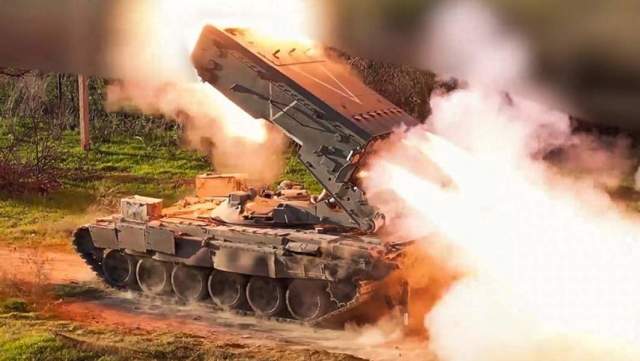
The calculation of the heavy flamethrower system TOS-1A "Solntsepek" is firing at the positions of the APU
Image Source: Photo: TASS/Ministry of Defense of the Russian Federation
In the Kharkiv region, a missile strike destroyed two installations of the American HIMARS multiple launch rocket system, four tanks, 15 vehicles, a warehouse of rocket and artillery weapons and 43 Ukrainian militants.
On Sunday, in the Krasno-Limansky direction, the enemy tried to conduct offensive operations with two company tactical groups. All attacks are repelled. More than 50 servicemen, one tank, two infantry fighting vehicles and one armored personnel carrier were destroyed. On Saturday, the enemy continued unsuccessful attacks by tank and motorized infantry companies in the direction of the settlement of Chervonopopovka in the LPR. More than 70 servicemen, four tanks, two armored fighting vehicles and three pickups were destroyed.
During the offensive in the South Donetsk direction, Russian units destroyed enemy detachments in the areas of the settlements of Novomikhailovka and Vladimirovka in the DPR and captured a number of strongholds and commanding heights. The assault detachments advanced into the depth of the enemy's defense by more than 3 km and reached the southern outskirts of the settlement of Pavlovka in the DPR.
More than 100 servicemen, one tank, three armored fighting vehicles and six pickups were destroyed. Six servicemen surrendered, one tank was captured.
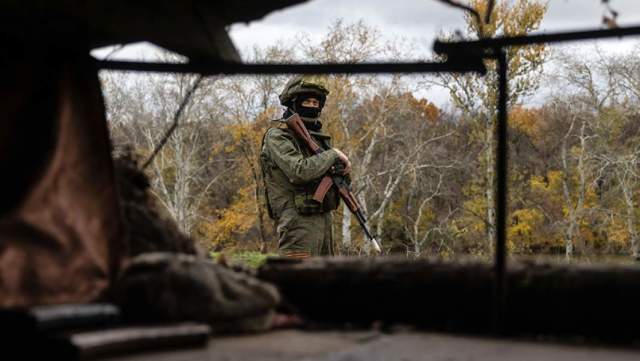
A fighter of the Russian volunteer unit in positions on the contact line in the LPR
Image Source: Photo: TASS/Stanislav Krasilnikov
On October 30, three attacks by company tactical groups of the VFU were repulsed in the Mykolaiv-Krivoy Rog direction. The enemy has been thrown back to the initial lines. In addition, 13 areas of concentration of enemy reserves were defeated. More than 180 military personnel, 11 armored combat vehicles and 21 vehicles were destroyed. A day earlier, five attacks by company tactical groups were launched by the VFU in this tactical direction. The enemy was also pushed back to their original positions. More than 60 servicemen, 17 armored combat vehicles and 12 vehicles were destroyed.
Drone strikes in the Kherson region destroyed a self-propelled fire installation of the Buk-M1 anti-aircraft missile system and two American M777 howitzers.
In two days, the operational-tactical, army aviation, missile troops and artillery of Russia hit nine control points, three ammunition depots, the communications center of the VFU, 136 artillery units in firing positions, the special operations forces training center of the VFU and 378 areas of concentration of troops.
Fighter aircraft shot down a MiG-29 aircraft of the Air Forces of Ukraine near the settlement of Prishib, Mykolaiv region.
During the counter-battery fight, an artillery battery of American M777 howitzers, two launchers of the American HIMARS multiple launch rocket system, a launcher of the German MARS-2 multiple launch rocket system, a warehouse of rocket and artillery weapons, an American AN/TPQ-37 counter-battery radar station were hit.
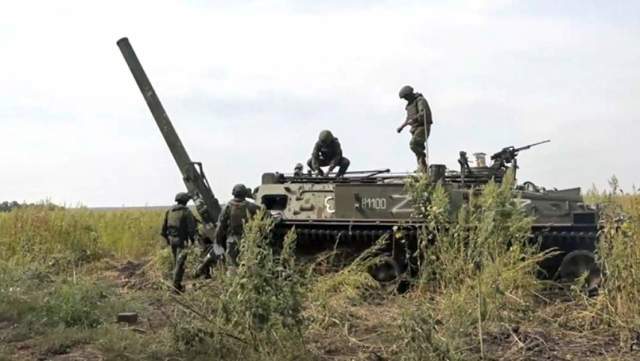
Combat work of the calculation of the 240-mm self-propelled mortar 2C4 "Tulip" of the Western Military District in the zone of a special military operation
Image Source: Photo: TASS/Ministry of Defense of the Russian Federation
Fighter aircraft shot down a Mi-8 helicopter of the Ukrainian Air Force near the village of Dudchany, Kherson region.
The Russian Air defense forces destroyed 24 drones, 41 shells of the American HIMARS multiple rocket launcher system in the areas of the settlements of Vuglyar and Mezhevoye in the DPR, Antonovka, Novaya Kakhovka, Olgovka, Olgino, Otradokamenka, Pershotravnevoye and Lviv of the Kherson region in two days, one rocket "Alder" in the area of the settlement of Popasnaya in the LPR, 14 American HARM anti-radar missiles in the areas of the settlements of Zelenovka, Antonovka, Kherson region and Svistunovka in the LPR.
In addition, two Mi-8 helicopters of the Ukrainian Air Force were shot down in the air in the areas of the settlements of Kirovsk and Konstantinovka in the DPR and a Su-25 aircraft in the area of the settlement of Nikolskoye in the DPR.
In total, since the beginning of the special military operation, 328 aircraft, 167 helicopters, 2,380 unmanned aerial vehicles, 384 anti-aircraft missile systems, 6,192 tanks and other armored combat vehicles, 879 multiple rocket launchers, 3,537 field artillery and mortars, as well as 6898 units of special military vehicles have been destroyed, Igor Konashenkov listed.
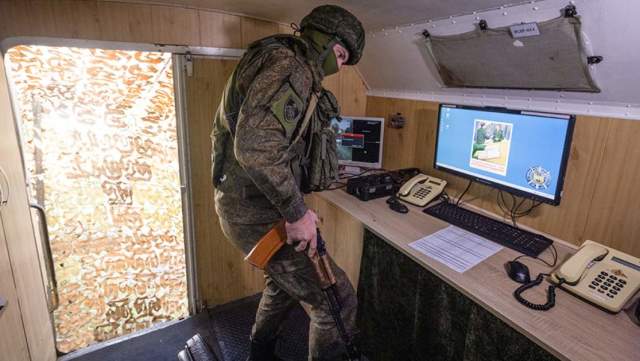
A soldier of the units of the Central Military District's signal troops in the zone of a special military operation
Image Source: Photo: TASS/Stanislav Krasilnikov
The Kiev regime continues provocations at the Zaporozhye NPP. On October 30, three shelling attacks were recorded on the Power Plant and the territory adjacent to the nuclear power plant. The Ukrainian artillery fired 10 shells from the Dnipropetrovsk region. VFU units are suppressed by return fire.
In addition, during an attempt to land a sabotage and reconnaissance group of the VFU to infiltrate the Energodar, one high-speed boat of the VFU was destroyed.
Also on October 29, 50 Russian servicemen were returned from captivity. They were flown by aircraft of the Russian Aerospace Forces to Moscow for treatment and rehabilitation in medical institutions of the Ministry of Defense of the Russian Federation. All those released are provided with the necessary medical and psychological assistance.
Accurate MLRS fire
The Russian Defense Ministry told about the servicemen who showed courage and dedication in the battles.
A group of Ukrainian saboteurs attacked the calculation of the artillery battery of senior sergeant Vyacheslav Shibikin. A battle ensued, during which Vyacheslav personally destroyed three militants with small arms. As a result, the saboteurs retreated, and Vyacheslav gave the order to change the firing position.
— Thanks to the competent teams, personal courage and dedication of Vyacheslav Shibikin, it was possible to avoid losses among the personnel and preserve equipment, — the military department noted.
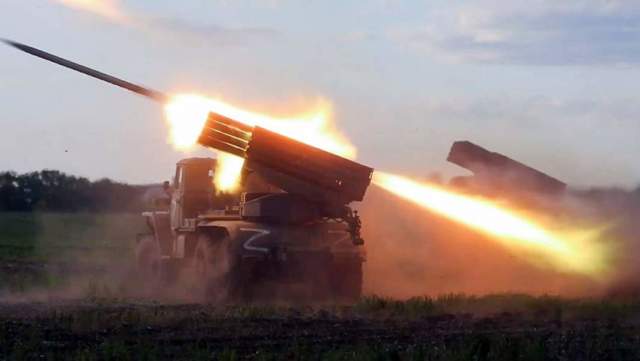
The Grad MLRS battery is firing at the objects of the military infrastructure of the Armed Forces of Ukraine
Image Source: Photo: TASS/Ministry of Defense of the Russian Federation
Communication lines were damaged during the shelling of Russian positions. Corporal Vladimir Lotov, despite the enemy's mortar fire, promptly repaired the damage. Thanks to his competent and selfless actions, it was possible to prevent the loss of control of the rocket artillery division, transfer the necessary data to the calculations of combat vehicles and deliver a fire strike at enemy locations, the department said.
Junior Sergeant Eduard Kupchenko, with his calculation, supported the artillery fire of the motorized rifle units. During the battle, the crew of Eduard's MLRS combat vehicle destroyed a hangar with enemy military equipment, six units of automotive equipment and up to 15 militants.
The courageous and decisive actions of Junior Sergeant Eduard Kupchenko, as well as the professionalism and coordinated actions of his subordinates allowed to inflict significant damage to the defending militants, the military department stressed.
Andrey Fedorov
Bogdan Stepovoy
